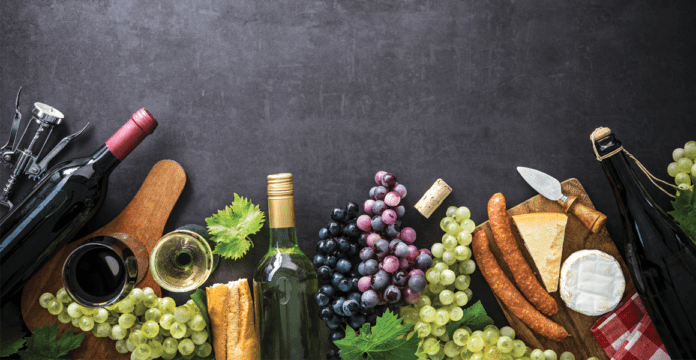With a multitude of NPD entering the market and consumers more health-conscious than ever before, Tom Gockelen-Kozlowski looks at what wholesalers need to do to stay on top of the wine & spirits category
Blink and you’ll miss it – or at least be behind the curve. There are so many trends and shifting consumer behaviours in the alcohol market that depots’ ranges need to adapt at pace. Thankfully, this speed of movement has always been wholesalers’ advantage over the multiples and despite younger drinkers choosing to consume less than their parents, a quick look at the latest trends highlights just how many profit opportunities there are.
Yearly growth in demand non-alcoholic drinks
Wine
One big trend – which is being seen in beer and spirits, too – is for low- and no-alcohol drinks. It’s a big focus for major suppliers.
“The popularity of low- and no-alcohol wines has risen, driven mainly by younger shoppers conscious of their eating and drinking habits,” says Kirstie McCosh, marketing director at Treasury Wine Estates. She adds that demand for non‑alcoholic drinks is growing by 40.5% year on year.
Catering to this trend, Blossom Hill Spritz has 5% ABV and sits alongside the company’s low-alcohol brand Rawson’s Retreat, which comes in red, white and sparkling varieties.
Other trends are simply taste-based and it seems like Britons are becoming more sophisticated, increasingly preferring dry, pale rosé wine. For example, consumers voted Blossom Hill Pale Rosé this year’s top wine innovation.
Some movement in the wine market is affected by other categories. Blossom Hill Gin Fizz is possibly the clearest example of this – a sparkling mixture of wine, botanical-infused water and gin, it brings together a lower ABV (8.5%) with trends for botanics and flavourings seen in the craft spirits market.
In terms of in-depot category management, McCosh says: “Wholesalers can support their customers by offering a wide range of wines from well-known brands, to help expand stores’ offerings. Wine can be confusing, and using clear imagery and good descriptions to help them locate what they need will maximise sales.”
Craft and premium spirits
From the most on-trend Soho cocktail bars to Wetherspoon’s much-marketed Gin Palace, premium gin is everywhere. Gordon’s and Beefeater – two of the biggest sellers – both have pink variants, and Plymouth Gin, Edinburgh Gin and Hendrick’s are now becoming ubiquitous behind bars and on store shelves.
New entrants, each with their own USP, are arriving all the time. Australian brand Manly Spirits makes much of its ingredients list, which includes sea lettuce, sea kelp, anise myrtle, finger lime and lemon aspen. Meanwhile, Mermaid Gin – made in the Isle of Wight’s only distillery and featuring recyclable plastic packaging – is looking to hit two major trends: provenance and the environment.
But the search for premium spirits is now spreading. Rum has slowly grown into a major opportunity, with niche brands such as Copalli sitting alongside larger emerging brands such as Mount Gay and spiced extensions from Bacardi, Captain Morgan and Lamb’s.
And now it is the turn of vodka. Diageo Reserve’s Ketel One brand is bringing a range of botanical vodkas to the market this year, twinning the craft story with a lower ABV and providing a new option to the many ‘less but better’ drinkers.
“We’ve watched the gin category boom in recent years, introducing new and herbaceous flavours,” says Bob Nolet, master distiller at the Nolet Distillery, home of Ketel One. “Premium vodka continues to grow alongside this, currently up 6.2% by value with innovation driving this.”
The flavoured, lower-ABV, vodka sub-sector is now moving outside the craft and premium markets, too. Smirnoff Infusions is a new range of vodkas infused with fruits, available in four on-trend flavours. Diageo’s £4.4m marketing support highlights how seriously major suppliers take the lower-ABV spirits market, with wholesalers given a vital role. “To take advantage of the profit opportunity this unique new offering presents, retailers should look for it in wholesale, situated with vodka,” the company says.
Meanwhile, established specialist brands are also refreshing their offers. Żubrówka vodka has long been beloved by Polish emigrants but is hoping to broaden its customer base with Żubrówka Biała, a premium distilled vodka.
Adrian Taylor, head of on-trade at Żubrówka’s brand owner, Roust, says wholesalers should work with suppliers to understand the “category and consumer rationale supporting the launch”.
Taylor says that a good depot team should be able to talk to customers about the provenance of a brand, but admits other strategies are also required, as depot staff have thousands of other SKUs to manage day to day.
“They should be looking to give as much feature and display as possible to new products outside the normal aisles, be that in the depot itself on pallet displays or on aisle-ends, or alternatively through brochures, retail club comms and events,” Taylor says. “Retailers won’t buy a product that they either don’t know about or can’t find in depot.”
Winning on the go
There is an inevitability to premium and craft’s rise in the spirits sector, but it feels bolder in the ready-to-drink (RTD) market.
Premium craft RTD manufacturer Longflint Drinks Co is an award-winning leader in this particular pack and can now be found on the shelves of Booker depots, as well as on those of a host of specialist alcohol wholesalers including James Clay. The company’s co-founder, James Law, explains why this emerging market makes sense.
“The RTD section has seen very little innovation in recent years. If craft is the new norm, why is this affluent consumer group left with the choice of brand extensions from the big alcohol groups alongside the remaining alcopops?”
Added to this, the cash margins his products provide should make them “an easy stock option for retailers and wholesalers alike”, he says.
Meanwhile, ready-made-cocktail brand Funkin has launched a series of Nitro Cocktails cans. Managing director Ben Anderson says he is targeting the eight million consumers who drink cocktails on a night out. “Launching before the key summer months, they will be a must-stock this year,” he adds.
The craft trend is now having a big influence on the RTD market, but the other behemoth trend – lower ABV – is also moving in, with Gordon’s Ultra Low providing a G&T experience for consumers (0.5% ABV and 68 calories).
“We know there is a credible opportunity for branded spirits within the low- and non-alcoholic category, with non-alcoholic wine up 66% and non-alcoholic beer showing 37% value growth,” says Chris Brooks, senior innovation commercialisation manager at Diageo.
At Longfling Drinks Co, Law believes the quality and relevance of premium RTDs means the advice he gives wholesalers can be simple.
“The RTD category is changing and your customers are looking for better, more exciting things to drink that have an authentic craft provenance. Maybe it’s time to revisit your RTD selection so you can benefit from the sea-change in drinking habits?”
It’s a message that looks relevant across this whole ever-shifting category.

senior customer category
manager, Diageo UK
Supplier viewpoint
“Consumer drinking habits are changing, with an increased focus on premiumisation and heritage, and it’s really important that wholesalers help retailers reflect this in their offer. As consumers grow more confident and their repertoires become broader, it is no longer appropriate to look at drink categories in isolation. They should be visible with depots’ displays, promotions and category support for the off-trade. To unlock true value, we must identify where and how consumers want to enjoy drinks, and ensure there is always a relevant offer for them. Wholesalers can play a big role in helping retailers achieve this.”
Retailer viewpoints

“With the wine market, you have to judge what works in your store and sales can be very regional. For example, I’ve heard that Dark Horse wines sell well in the west of Scotland, but they don’t sell here. I’m on the local Day-Today listening group and we share bestsellers here.”
Read more: Ferhan Ashiq’s store is fit for the future – is yours?

“Consumer drinking habits are changing, with an increased focus on premiumisation and heritage, and it’s really important that wholesalers help retailers reflect this in their offer. As consumers grow more confident and their repertoires become broader, it is no longer appropriate to look at drink categories in isolation. They should be visible with depots’ displays, promotions and category support for the off-trade. To unlock true value, we must identify where and how consumers want to enjoy drinks, and ensure there is always a relevant offer for them. Wholesalers can play a big role in helping retailers achieve this.”

“It’s important that we have a big range of different spirits, and it would be useful if we could get more single-pick spirits, rather than having to get cases of six all the time. Suppliers create displays for bars and it would be great if we could have something like this in store.”

“Around 90% of our spirits range is price-marked, so we’re really interested in building our specialist gins range. Right now, we’re buying it all online because Booker and Bestway don’t have it and neither does Dhamecha – although my depot manager says they’re getting a range in soon. It feels like they’re a year behind this trend.”
Product news
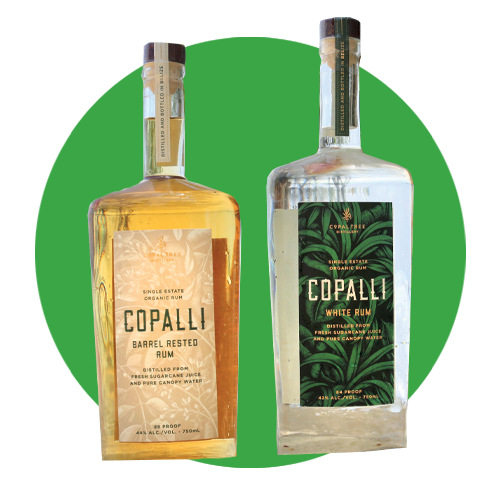
Organic and sustainably-produced Copalli White Rum is produced in the Belize rainforest alongside Copalli Barrel Rested Rum and is free from artificial flavourings, sugar and colourings.
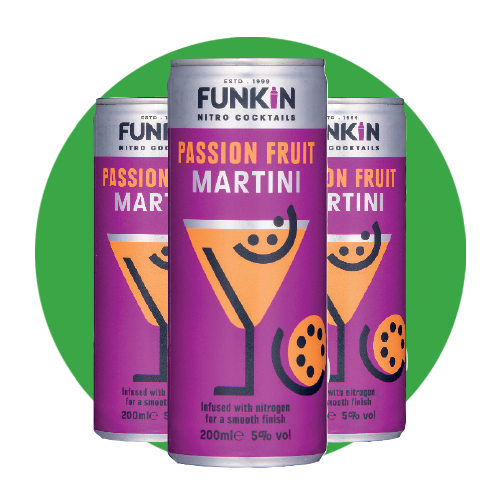
Available since May, Funkin Nitro Cocktails cans provide cocktail options including Pink Gin Fizz, Espresso Martini, Passion Fruit Martini and Amaretto Sour.
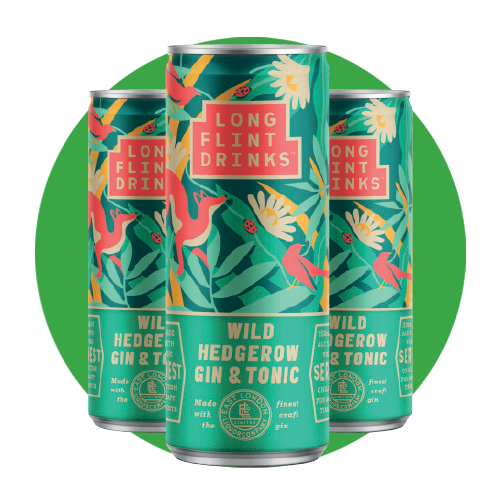
With on-trend branding, award-winner Longflint Drinks Co hopes to replicate the success of other craft markets with its premium Wild Hedgerow Gin & Tonic RTD can.
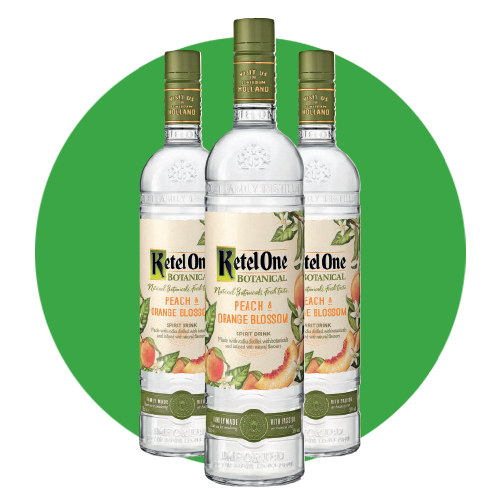
Ketel One Botanical Peach & Orange Blossom is one of three new botanical vodka launches from Diageo Reserve. A lower 30% ABV aims to create a new sub-category.
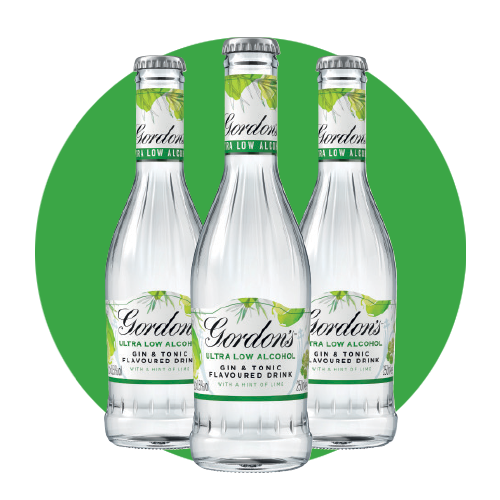
Treasury Wine Estates is bringing together trends for lower alcohol (8.5% ABV), botanics, gin and cocktails with Blossom Hill Gin Fizz, which comes in Rhubarb and Lemon with Rosemary flavours.
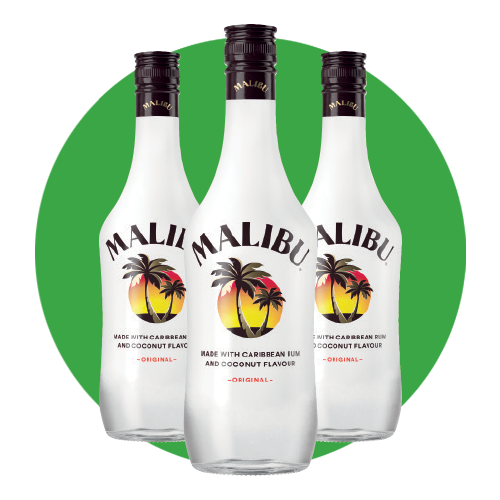
In readiness for a big summer – where the growing trend for rum should continue – Pernod Ricard has given summery Malibu a brand refresh across all formats.

Few spirits brands are as big as Diageo’s Gordon’s, and it has embraced the no- or low-alcohol trend with the release of Gordon’s Ultra Low Alcohol. The gin and tonic drink is flavoured with a hint of lime.
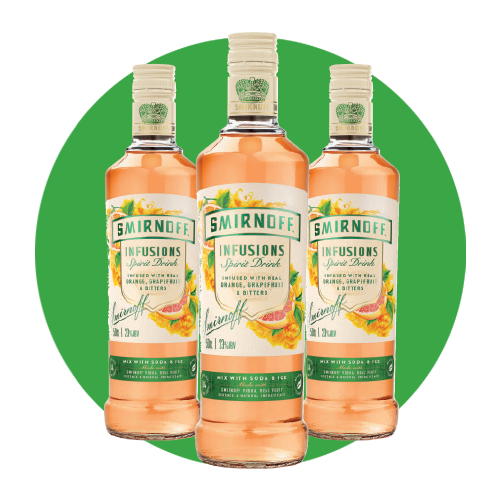
Lower-alcohol spirit-based trends are an emerging trend and Smirnoff Infusions (23% ABV) has been one major entrant. Two flavours are available in 50cl bottles.
Takeaway points
1. Low- or no-ABV – It is having an effect across the alcohol market, even on new spirits innovation from the biggest brands.
2. Trends are blending – Gin, botanics, rose wine and lower-ABV are all present in the category’s biggest launches.
3. RTD is a new frontline in the march of craft – It’s highlighted by branding, packaging and products from emerging and established brands.
4. New brands are still arriving – Across the craft gin market, there are new names fighting to establish their own niches.
5. Retailers are hunting out the best prices – They are finding new digital marketing companies offering cut-price NPD to eager shopkeepers.
